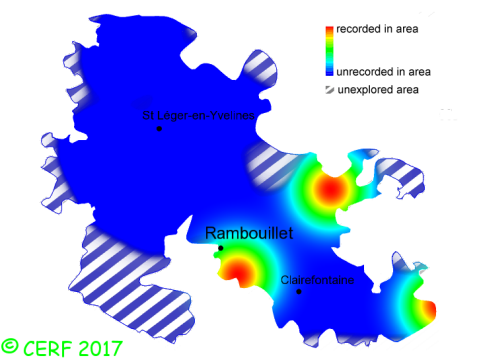|
Pluteus romellii (Britzem.) Sacc.
|
common name(s) : Goldleaf Shield
New classification: Basidiomycota/Agaricomycotina/Agaricomycetes/Agaricomycetidae/Agaricales/Pluteaceae
Former classification: Basidiomycota/Homobasidiomycetes/Agaricomycetideae/Pluteales/Pluteaceae
synonyms: Pluteus nanus-lutescens, Pluteus lutescens
edibility : discard
|
|
|
The cap is yellow-brownish ; its margin is striate when moist.
The cap surface is smooth, not viscid nor sticky.
The stem is yellowish, without ring.
The flesh is yellow, unchanging; the odour is not distinctive;
its texture is fibrous.
The gills are white yellow then pink yellowish, free, rather crowded .
The spore print is pink. This species is saprophytic.
It grows, with beech.
The fruiting period takes place from June to November.
| Dimensions: | width of cap approximately 3.5 cm (between 1.5 and 6 cm) |
| | height of stem approximately 5 cm (between 1.5 and 7 cm) |
| | thickness of stem (at largest section) approximately 4 mm (between 2 and 6 mm) |
Chemical tests : none.
Distinctive features : veined cap; yellow stem
Pluteus romellii is quite rare and localised in the forest of Rambouillet, and is occasional, more generally speaking
.
|  | | Above : distribution map of Pluteus romellii in the forest of Rambouillet |
|
page updated on 14/01/18